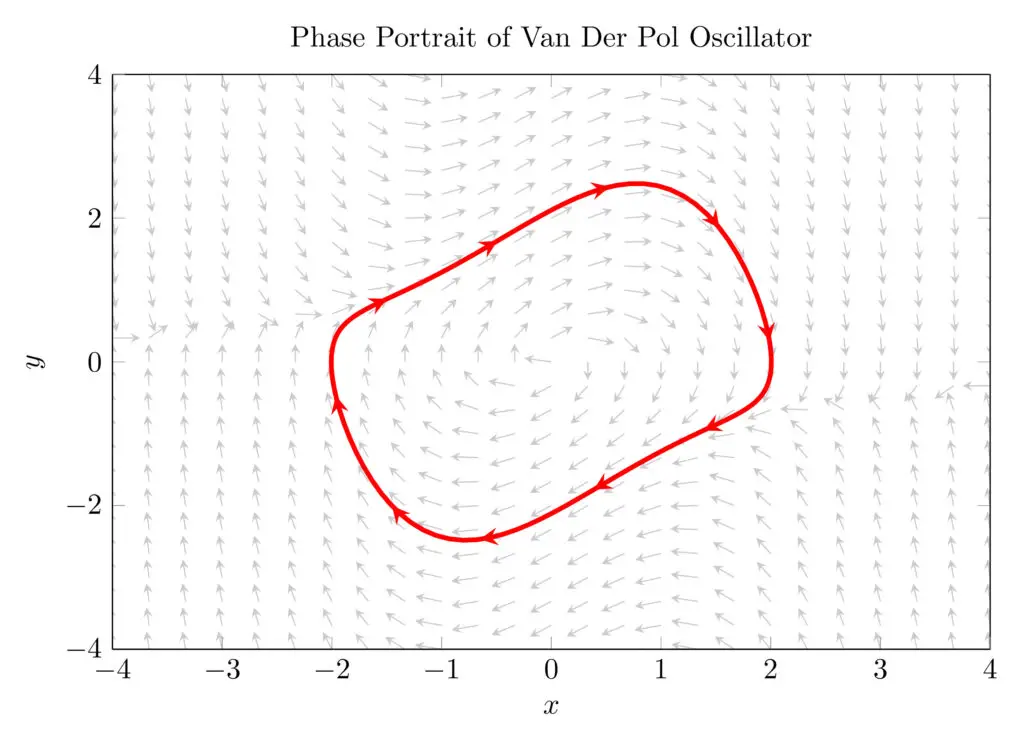

Grist (1997) constructed a universal template, a branched 2-manifold in which all knots are embedded. In addition, Birman and Williams (1983) showed an abundance of knotted periodic orbits embedded in the Lorenz attractor, though Williams (1983) showed all such knots are prime. The sensitivity to initial conditions common to chaotic dynamics is mediated by the intricate fractal interleaving of the multiple layers of the attractor. However, Haken established a connection with lasers. The Lorenz equations are very suggestive but do not represent weather systems very well. For the parameters σ = 10, b = 8/3, and r = 28, Lorenz (1963) suggested that trajectories in a bounded region converge to an attractor that is a fractal, with dimension about 2.06, as estimated by Liapunov exponents. Here x denotes the rate of convective overturning, y the horizontal temperature difference, and z the departure from a linear vertical temperature gradient. It’s not as interactive as the MATLAB version, but I think it works well enough as a first step.Ĭode is follows (please source in pplane.Dx dt = σ ( y − x ), dy dt = − xz + rx − y, dz dt = xy − bz. One can imagine running all kinds of 2D models. As analyzed by linearization, the predator-prey dynamics of this model is a center (you could see the dynamics go in a circle with the initial value up top). I could specify the color of the trajectory, and its time range. I run a predator-prey model from a previous post with parameters. If that number is 5, I click the graph 5 times, and it automatically runs the model.

When I run aj(), it asks for the number of initial points you’d like to give (denoted by loc.num).
Hot to draw phase planes for differential equation systems code#
Point is, the code can reproduce the pplane package in MATLAB to the best of my knowledge. I could make the code more coherent, but I am lazy. Also, the nullclines() function that draws the nullclines seems to not be working for whatever reason. The code is shown below and it’s a little bit redundant because of different model specifications between pplane.r and deSolve, but it works. I also made it possible to point click multiple points (initial values) to draw the trajectories from. Instead of using a self-made Runge Kutta method, I replaced it with a more robust ode() from the deSolve package. The only changes that made were to change the phasetraj() function, which draws the trajectories after you’ve made the arrow plot. The next step is to give in initial values to draw the trajectory. This is done by using a crude method to create the Jacobian matrix. It draws arrows at evenly spaced out points at a certain resolution to see the general shape of the dynamics. The pplane.r program takes in a 2D differential equation model, initial values and parameter value specifications to draw the dynamics on a plane.

Kaplan from Macalester College in his program, pplane.r.īelow is a slight modification of his program that uses the deSolve package for a more robust approximation of the trajectory, and I made it so you can draw the trajectories by clicking, using the locator() function. The closest I could find was code from Prof. R’s GUI itself is non-interactive (maybe because creating a good GUI require money), and you can’t fiddle around with the axes graphically, for example. The rest you fidget by clicking (to grab the initial conditions) and it draws the dynamics automatically.Īs far as I know, R doesn’t have a program of equal stature. pplane on MATLAB is an elaborate program with an interactive GUI where you can just type the model to draw the phase planes. MATLAB has a nice program called pplane that draws phase planes of differential equations models.


 0 kommentar(er)
0 kommentar(er)
